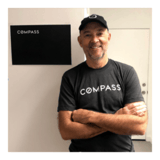Summary
Designing with rigid assumptions often means creating for a narrow set of “typical” users—people who look and think like us. But this mindset risks excluding real, diverse needs, especially those of people with disabilities, one of the fastest-growing population segments. In this talk, you’ll explore the hidden costs of designing systems for templated personas and learn why flexible, inclusive approaches are essential.
Key Insights
-
•
Disability affects one in five people, not a rare minority.
-
•
The medical model views disability as a person’s defect, while the social model locates disability in inaccessible environments.
-
•
There is no 'average user'; designing for average excludes most people.
-
•
User personas often fail to represent the true diversity and complexity of user needs.
-
•
Disability is a spectrum varying over time and circumstance, including temporary and situational disabilities.
-
•
Assistive technologies often become mainstream tools used by non-disabled users as well.
-
•
Designing early with people with disabilities reduces cost, complexity, and improves user experience.
-
•
People with disabilities should be included as active colleagues and participants, not just studied in research.
-
•
Testing accessibility requires experts who use assistive technologies daily, rather than sighted testers alone.
-
•
Inclusive design benefits future selves, catering for aging, cognition fluctuations, and situational impairments.
Notable Quotes
"People with disabilities are not one in a thousand. They’re one in five."
"We don’t design services for elves and unicorns because they don’t exist. So why are we designing services for average people?"
"The average user doesn’t exist."
"Disability is not a binary. We need to stop thinking of people as either disabled or not."
"Accessibility isn’t just about developers. Everybody has a small part to play."
"If services aren’t designed well for temporary disability, people won’t come back when they are well."
"Captions were once thought of as assistive tech for the few, now many use them regularly."
"When you’re driving a car, you are effectively blind to your phone’s screen."
"We solve our own problems extremely well, but we are not good at solving other people’s problems."
"Testing with a screen reader for QA is fine, but user research must be done with experienced assistive tech users."
Or choose a question:
















More Videos

"I wish I could tell my 22-year-old self what to stop doing and what to embrace to be a better designer."
Adam Cutler Karen Pascoe Ian Swinson Susan WorthmanDiscussion
June 8, 2016

"Sometimes the director is the most senior design person in the org and ends up playing the executive role without the title or support."
Peter MerholzThe Trials and Tribulations of Directors of UX (Videoconference)
July 13, 2023

"Everything that has been put online, someone like us made and put there; we bake our own biases into it."
Lisa WelchmanCleaning Up Our Mess: Digital Governance for Designers
June 14, 2018

"Investing in sustainability today will yield dividends for future generations."
Vincent BrathwaiteOpener: Past, Present, and Future—Closing the Racial Divide in Design Teams
October 22, 2020

"If you forget the individual, you cut out psychological safety, and that’s the foundation of strong teams."
Brenna FallonLearning Over Outcomes
October 24, 2019

"It’s human infrastructure—community organizing, unions, activists—that saves the day when other infrastructures break down."
Tricia WangSpatial Collapse: Designing for Emergent Culture
January 8, 2024

"Delivering research in small, lean increments allowed us to iterate fast and reduce bias."
Edgar Anzaldua MorenoUsing Research to Determine Unique Value Proposition
March 11, 2021
"Context-related data gathered through qualitative research is the first to reach our decision-making centers in the brain."
Designing Systems at Scale
November 7, 2018

"A lot of developers are way too confident they write perfect code; testing bug fixes often reveals hidden issues."
Erin WeigelGet Your Whole Team Testing to Design for Impact
July 24, 2024
















